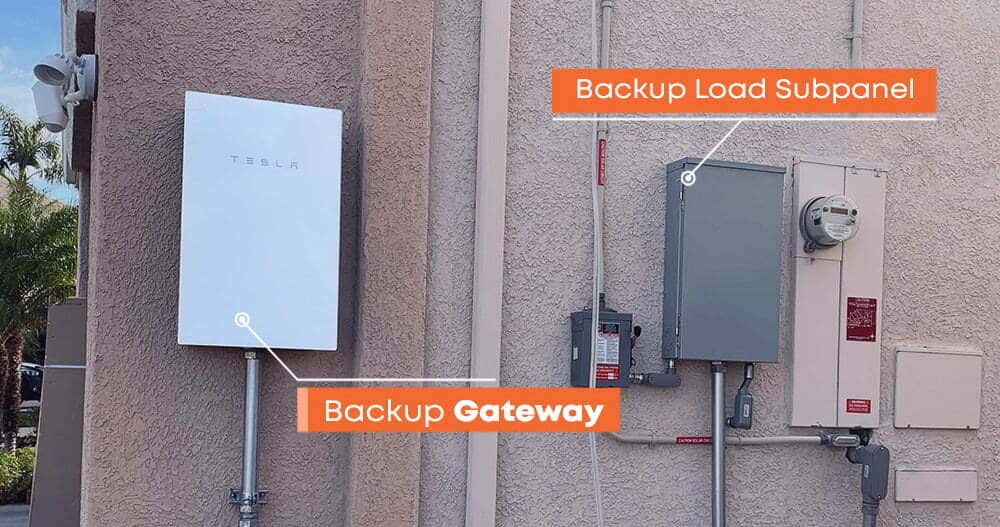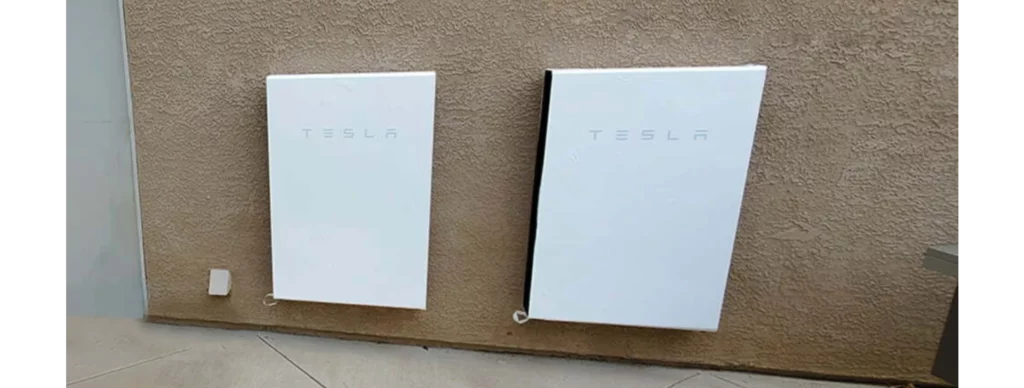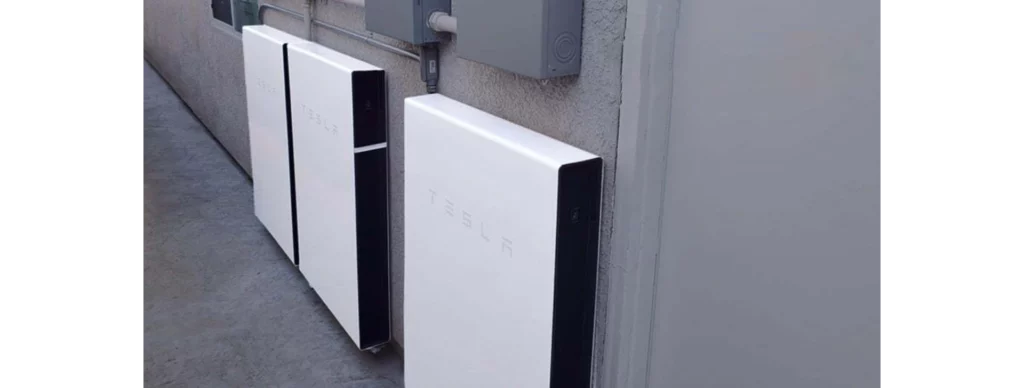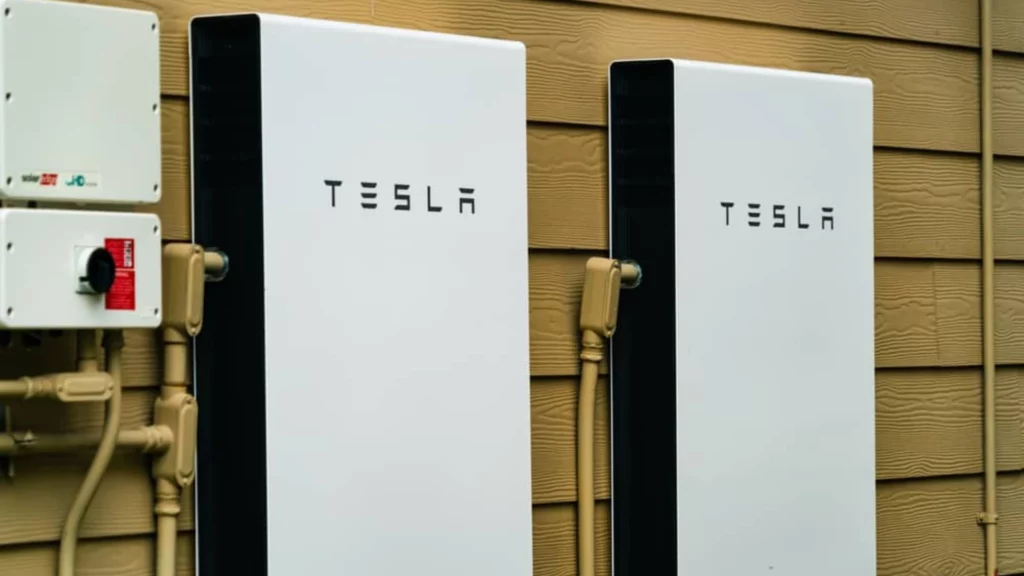Maximizing Tesla Powerwall Efficiency
If I'm looking to save money on my energy bill without compromising my carbon footprint, considering an energy storage solution like the Powerwall could be the right choice.
With peak energy demands occurring at certain hours, having a Powerwall can help offset high grid electricity rates effectively.
By discharging the stored energy during these peak periods, I can reduce my electricity costs and enhance the overall energy efficiency, ensuring a greener and more cost-effective approach to energy consumption.
What is Tesla Powerwall?
Tesla Powerwall, a modern energy storage solution, can be acquired from Tesla's website or authorized partners. The process is designed for a convenient experience.
To find a local Tesla energy partner, use the locator tool on the Tesla website.
Enter your location and discover the nearest authorized partner for in-person consultations and hands-on experiences.

How Does Tesla Powerwall Work?
The Tesla Powerwall stores excess electricity from renewable sources like solar panels or low-demand periods.
It uses lithium-ion batteries and works with solar or grid power for a reliable and sustainable energy supply.
- Energy Storage: When connected to a solar panel system, the Powerwall stores excess solar energy for later use. This avoids wasting sunny day energy and allows it to be used during cloudy days, at night, or during peak energy demand.
- Battery Chemistry: The Tesla Powerwall uses lithium-ion batteries that have high energy density and efficiency. These batteries have a long lifespan and can be charged and discharged many times without losing capacity. They provide stable and consistent power over a long time.
- Inverter Integration: The Powerwall includes an inverter that converts stored DC electricity into AC electricity, making it capable of powering household appliances and electronics. This enables it to seamlessly replace or supplement grid electricity for a home's electrical system.
- Smart Energy Management: Tesla Powerwall has software that monitors energy production, usage, and grid conditions in real-time. It charges and discharges the Powerwall efficiently, storing extra energy for use during peak demand or when electricity rates are higher. The aim is to reduce reliance on the grid and save users money.
- Backup Power: The Tesla Powerwall is a dependable backup power source during power outages. It switches to backup mode, supplying stored electricity to vital appliances, ensuring uninterrupted power supply in emergencies.
- Remote Monitoring and Control: The Tesla Powerwall is monitored and controlled through a mobile app. Users can view data on energy usage, storage levels, and system performance. The app also allows scheduling of charging and discharging to meet individual energy needs.

Maximum Power Rating
The Tesla Powerwall is a lithium-ion battery with liquid thermal control. Released in April 2015, it has a 5 kW power rating and 13.5 kWh capacity. The power rating determines its ability to power appliances, like a bigger straw in a drink.
The Tesla Powerwall powers American homes for a day, but low battery capacity creates grid reliance issues. To solve this, Powerwall has different modes, though high power rating may not suit everyone.
Installing a Tesla Powerwall is challenging. It must be indoors for efficiency and protection, though the Powerwall 2 can be installed outside. However, it is less effective in the cold. Consult a solar designer for details on ground or wall mounting options.
When buying a battery, the depth of discharge is crucial. It indicates how much you can use the battery before recharging. Solar batteries typically have a DOD of 80-90%, meaning a higher DOD equals a longer battery life and better performance.
Battery capacity determines how much power a battery can store. A Tesla Powerwall, with a 13.5 kWh capacity, can sustain a house for 10 hours and meet higher power needs without frequent recharging.
Usable Capacity
Tesla Powerwall 2 is crucial for storing energy during shortages, improving grid resilience, and being mandatory in some solar markets. Its significant capacity is essential for residential use and saving money.
The Tesla Powerwall intelligently charges and discharges based on electricity cost, perfect for time-of-use rates. It can save money and be set for more power storage if needed.
The versatile Tesla Powerwall 2 is a minimalist battery that can be installed indoors or outdoors. With a 13 kWh capacity, it can independently power appliances and provide unlimited home power when paired with solar panels.
It offers backup functionality and the ability to supply a specific percentage of AC power.
The Tesla Powerwall is a versatile battery for various locations. Its main feature is expandable capacity for longer charge. Buying a larger battery doubles capacity but remember it diminishes over time. Powerwall is a cost-saving option for homes and businesses.
The Tesla Powerwall is controlled through a smartphone app for Android and iOS, providing access to settings and real-time charging updates. It offers convenient and reassuring functionality for your home.

Maximizing Tesla Powerwall Efficiency
- Seamless Solar Panel Integration: To maximize Tesla Powerwall efficiency, integrate it seamlessly with solar panels. This way, you can use clean and renewable energy to charge the Powerwall, reducing reliance on the grid and cutting electricity bills.
Check out one of our top picks for solar panels EF ECOFLOW 2PCS 100W 12V Solar Panels Review
- Strategic Charging and Discharging: Maximize Tesla Powerwall efficiency by timing charge and discharge. Charge during low demand or high renewable energy production, and discharge during high demand or peak grid rates. Reduce grid reliance, and increase energy use.
- Empowerment through Energy Monitoring and Management: The Tesla Powerwall has advanced energy monitoring and management tools to understand usage, find peak demand hours, and optimize consumption.
- Capitalizing on Time-of-Use Settings: Utility companies have time-of-use pricing, where electricity rates vary based on the time of day. By aligning the usage of your Tesla Powerwall with peak TOU periods, when electricity is costlier, you can lower your utility expenses and save energy.
- Enhancing Efficiency with Energy Conservation Practices: To optimize the Tesla Powerwall, and conserve energy in daily life. Turn off lights and appliances, use efficient bulbs, and buy energy-saving devices. This saves energy and improves the Powerwall's performance.
- Ensuring Peak Performance through Regular Maintenance and Firmware Updates: Regular maintenance is crucial for the Tesla Powerwall to remain efficient. Monitor battery health, clean solar panels, and inspect for issues. Update firmware for better performance. These proactive steps ensure reliable operation.

Thermal Management System
Tesla Powerwall has different modes and a smart temperature-based energy system. It provides backup power during outages and prepares for storms using weather sensors.
It can work in cold weather with a preheat mode, but if the battery is low, this feature may not work. The patent outlines three modes: “COP1 compressor heating” for vehicle heating without battery drain, and “heating” to release excess energy.
The Powerwall increases power output by 50% at 30C after analyzing data. Compared to other batteries, it offers higher power. You can manage temperature and monitor energy flow via an app, choosing the best mode based on the time of day.
Compatible Equipment
The Tesla Powerwall is designed for compatible energy systems. The first version had 6.4 kWh capacity and 3.3 kW continuous power.
The later Powerwall 2 models have the same capacity but can deliver up to 10 kW peak power with compatible systems.
When shopping for Tesla Powerwall efficiency, consider price and solar panel type. Tesla Powerwall costs $11,050, not cheap.
Higher price means better home efficiency. Compatible equipment saves installation money, but finding it takes time.
A Tesla Powerwall increases power by 50% in freezing temperatures, unlike other lithium batteries. It warms up cells using grid power or a backup battery during blackouts, but caution is advised when the charge is low.
Consider using a solar panel or battery array. It generates clean electricity and stores surplus energy.
With a Tesla Powerwall, it reduces reliance on the grid and provides electricity during outages. Worth considering for a reliable backup system.

Where to Get Tesla Powerwall
Tesla Powerwall can be purchased from Tesla's website or their authorized energy partners for a hassle-free experience.
The Tesla website has a locator tool to find nearby energy partners.
Input your location and find the closest authorized partner for in-person consultations and hands-on experiences.
Tesla's customer support team helps customers choose the right Powerwall system for their needs. They offer personalized attention and tailored solutions for homes and businesses.
Conclusion
After discovering the benefits of the Tesla Powerwall, I believe it is the ideal energy storage solution for my home.
Its seamless integration with solar panels, strategic charging and discharging, and intelligent energy management make it efficient and sustainable.
Regular maintenance and firmware updates optimize Powerwall's performance, giving me peace of mind.
It stores excess solar energy for peak demand or power outages, ensuring a stable and reliable power supply for my household.
Sources:
Tesla powerwall: Analysis of its use in Portugal and United States

